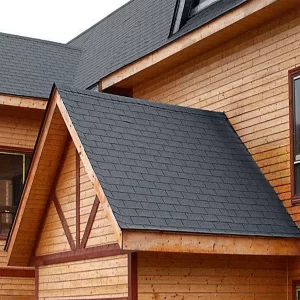A new roof is one of the most significant investments you can make in your home. Whether you’re replacing an aging roof or upgrading for aesthetic and functional reasons, understanding the process can help you make informed decisions. Here’s everything you need to know about getting a new roof.
Signs You Need a New Roof
Before jumping into the replacement process, it’s essential to recognize the signs indicating that your roof needs an upgrade. Here are some common indicators:
 Age: Most asphalt shingle roofs last between 20-30 years. If your roof is nearing the end of its lifespan, it might be time for a replacement.
Age: Most asphalt shingle roofs last between 20-30 years. If your roof is nearing the end of its lifespan, it might be time for a replacement.
Visible Damage: Missing, curling, or cracked shingles are signs of wear and tear.
Leaks and Water Damage: Water stains on ceilings and walls can indicate roof leaks.
Moss and Algae Growth: Excessive moss or algae can signal trapped moisture, which can lead to roof deterioration.
Sagging Roof: A sagging roof could be a sign of structural issues that need immediate attention.
Choosing the Right Roofing Material
Selecting the right roofing material is crucial for durability, energy efficiency, and aesthetics. Here are some popular options:
Asphalt Shingles: Affordable and widely used, offering good durability and variety in colors.
Metal Roofing: Highly durable, energy-efficient, and can last up to 50 years.
Tile Roofing: Offers a unique aesthetic and longevity but is heavier and requires a strong support structure.
Slate Roofing: One of the longest-lasting materials but comes at a higher cost.
Wood Shingles and Shakes: Provide a natural look but require more maintenance.
The Roof Replacement Process
Understanding what to expect during a roof replacement can help you prepare for the project. Here’s an overview of the process:
Inspection and Estimate: A professional roofer will assess your roof’s condition and provide a cost estimate.
Choosing Materials: Decide on the type, color, and style of your new roof.
Permits and Paperwork: Ensure that all necessary permits are obtained before work begins.
Removing the Old Roof: The existing roofing material is stripped down to the decking.
Inspecting the Decking: The roof decking is checked for damage and repaired if needed.
Installing the New Roof: A new underlayment, flashing, and shingles or other roofing materials are installed.
Final Inspection and Cleanup: The area is cleaned, and a final inspection ensures the installation meets quality standards.
Tips for Hiring a Roofing Contractor
 Hiring the right contractor ensures a smooth and successful roof replacement. Here’s what to look for:
Hiring the right contractor ensures a smooth and successful roof replacement. Here’s what to look for:
Licensed and Insured: Always choose a contractor with proper licensing and insurance.
Experience and Reputation: Check reviews, ask for references, and look at past projects.
Warranty Offered: A good contractor should provide a workmanship warranty in addition to the manufacturer’s warranty on materials.
Detailed Estimate: Ensure you receive a written estimate with a breakdown of costs.
A new roof is a major home improvement project, but with proper planning and the right professionals, it can be a smooth process. Whether you’re upgrading for aesthetics, energy efficiency, or necessary repairs, investing in a quality roof ensures protection, value, and peace of mind for years to come.
If you’re considering a roof replacement, consult a professional roofer to discuss your options and get a quote tailored to your needs.
